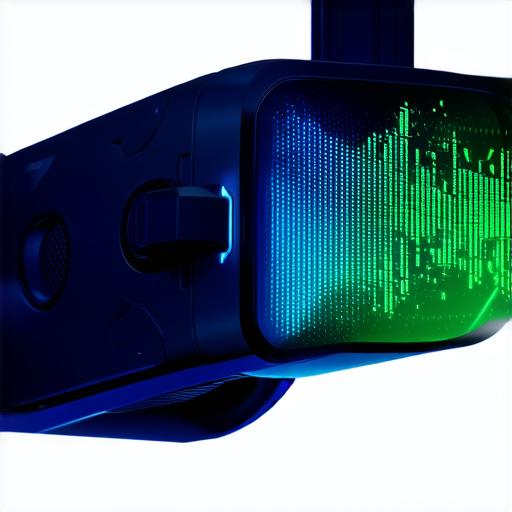Virtual reality (VR) is a computer-generated technology that allows users to experience a simulated environment as if they were physically present. It’s an immersive, interactive, and highly engaging medium that has captured the imagination of millions of people worldwide.
What is Virtual Reality?
Virtual reality technology can be described as a combination of computer graphics, motion tracking, and sensory feedback that work together to create a simulated environment. Users wear a VR headset or use handheld devices to interact with this virtual world, which can be anything from a simple game to a complex 3D model or even an entire city.

Examples of Virtual Reality
One of the most well-known examples of virtual reality is gaming. With VR, gamers can immerse themselves in a game’s world as if they were physically there, making for a more engaging and interactive experience. For example, popular VR games like Beat Saber and Half-Life: Alyx have become household names, attracting millions of players worldwide.
Examples of Virtual Reality
Virtual reality is also being used in education and training. In medicine, it’s being used to simulate surgeries and other procedures, allowing doctors and students to practice without the risk of harm to patients. Similarly, pilots and astronauts are using VR to train for their jobs, giving them a safe and controlled environment to practice in.
Examples of Virtual Reality
Virtual reality is also being used in healthcare, where it’s helping people with PTSD, anxiety disorders, and other conditions to overcome their fears and anxieties. For example, a study published in the Journal of Nervous and Mental Disease found that VR exposure therapy was effective in treating PTSD symptoms in veterans.
Examples of Virtual Reality
Virtual reality is also being used in entertainment, from virtual concerts and tours to immersive movies and documentaries. One of the most famous examples is the VR documentary “The Room,” which takes viewers on a journey through the world of VR gaming and technology.
How Virtual Reality Works
Virtual reality works by combining computer graphics, motion tracking, and sensory feedback to create a simulated environment. Users wear a VR headset or use handheld devices to track their movements and interact with the virtual world around them.
Motion tracking technology allows the VR system to track the user’s movements in real-time, such as their head position, hand gestures, and body movements. This information is used to update the user’s position in the virtual world and to adjust the sensory feedback they receive.
Sensory feedback includes visual and audio cues that make the user feel like they are actually in the virtual environment. For example, a VR headset may have screens that adjust to mimic the motion of a user’s eyes, while headphones may play sounds that simulate the environment around them.
History of Virtual Reality
Virtual reality technology has been around for decades, but it’s only in recent years that it’s become more accessible and affordable. In the 1960s, a pioneering researcher named Ivan Sutherland created the first VR headset, which he called the “Sword of Damocles.” This early system used a projector to display stereoscopic images in front of the user’s eyes, creating an immersive 3D experience.
In the 1970s and 1980s, virtual reality technology began to be used in research and development applications. For example, NASA used VR to train astronauts for space missions, while the military used it for training soldiers in combat scenarios.
Over the years, virtual reality technology has continued to evolve, with advancements in computer graphics, motion tracking, and sensory feedback making it more immersive and interactive.
